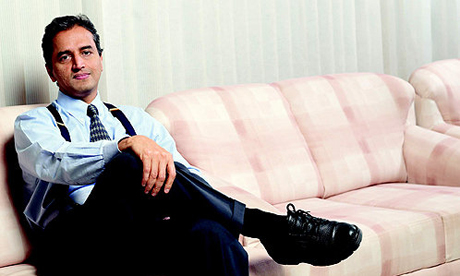
When I started my hospital nine years ago and said we should perform at least ten heart surgeries a day, people thought I was crazy. Today we perform around 30 each day, around 600 a month. When I worked at Guy's Hospital in London back in the late 1980s, we had 600 heart surgeries in a year. And it was the largest heart unit in Europe at that time.
When I returned to India after practicising surgery in the UK and elsewhere, I had the privilege of treating Mother Teresa for the last five years of her life. That experience had a huge impact on me. But even before that time, I was concerned with India's health requirements, because I grew up in a small town that was bordered by villages. I got an impression of how the rural population lives and what their needs are.
Furthermore, as a student of medicine in India, you have to undergo a training programme in a government hospital where all your clients are very poor people. So you are exposed to the woefully reality of what health service provision in this country is like at a very young age.
India has one of the world's highest birth-rates, unfortunately we have a lot children suffering from heart disease as well. At the hospital I'm working at, we believe that children are an equal part of society and if parents are unable to provide the high costs of an operation, we have no option but to pay all costs incurred on our own.
As I said, we perform up to 30 operations per day whereas in Western countries, hospitals do around two or three. So due to the sheer number of them, the cost of operations comes down. Additionally, money from our private patients is also used to subsidise the less well-off.
We also tell our employees, doctors and nurses that they have to differentiate between need and greed. In the world today, only 8% can afford heart surgery. For the other 92%, treatment is just a distant dream. This is not only a health problem. It is an economic problem too.
When I was a medical student, it was common practice for all the politicians and policymakers to say: "We are a poor country, for now, but one day we will become rich. Then everyone will have healthcare". And we believed them.
But now we are noticing that, as we become wealthier, the cost of healthcare keeps going up too. Look what's happening in the US for example. It's one of the richest countries in the world, but nearly a quarter of the population can't afford healthcare. So becoming a rich country won't necessarily guarantee quality healthcare for all citizens.
We have to find an alternative model. This means we need to rethink the way we deliver healthcare to the people. We are not trying to come up with a magic pill. All we are trying to do is to submit what is already available.
The first heart surgery was done a century ago. One hundred years later only a small fraction of the world's population can afford it. There must be something wrong with that.
In India, we have the capacity to deliver mass healthcare. We have the largest number of doctors in the world. The US trains about 16,000 doctors per year while we train about 32,000. Outside the US, we have the largest number of pharmaceutical manufacturing units. We have in-built capacity to make medicines for the whole world if we were allowed to.
India's only weak point is that people can't afford to pay for healthcare. But almost everywhere in the world, healthcare is linked to affluence. I hope that India will become the first country in the world that will dissociate both.
One of the main solutions is 'micro-health insurance'. My hospital started a micro-insurance scheme eight years ago. Participants pay ten rupees per month (£0.15). This contribution is topped up by a government subsidy of five rupees. The result is that people can be insured for heart surgery that would cost up to $60,000 in the Western world. Nearly three million people are now signed up to the scheme.
The poor are willing to pay, as long as they can afford to pay a small amount in installments. That's how our insurance policy works. The farmers pay whenever they sell their products and earn money from it.
The potential for this kind of low-cost model is tremendous. Several state governments in India are now adopting our micro-health insurance model. Politicians are clever, they realise that one of the best ways to protect their votes is by providing health insurance. In Andhra Pradesh, for example, the Congress Party regained power with a thumping majority, thanks to that fact.
As a result, state governments are becoming health insurance providers rather than healthcare providers. This is how it should be. If you want to address problems related to poverty, business solutions might be the only option. The government on its own doesn't have enough money. Policymaking should create an environment in which private enterprises compete together for greater efficiency.
Our target at Narayana Hrudayala is to create 30,000 beds across India in the next five years. We currently have around 6,000. Today, 12% of the heart surgeries in India are performed by us. We want to push it up to 30%. When we reach this level, we'll be able to negotiate the terms with pharmaceutical companies and equipment suppliers.

